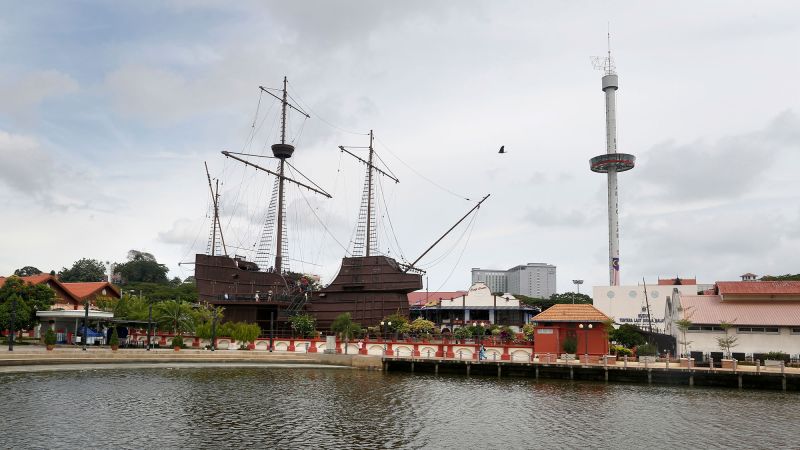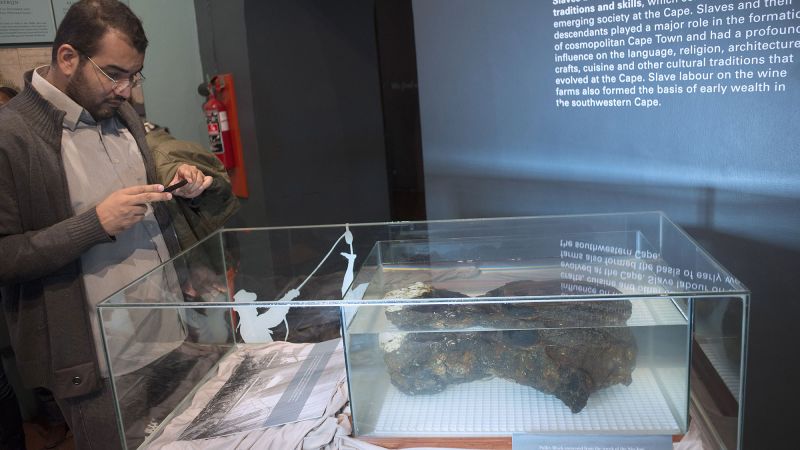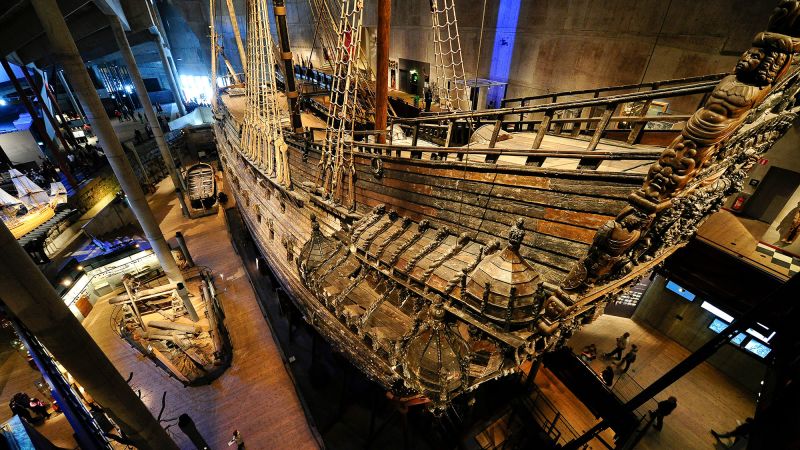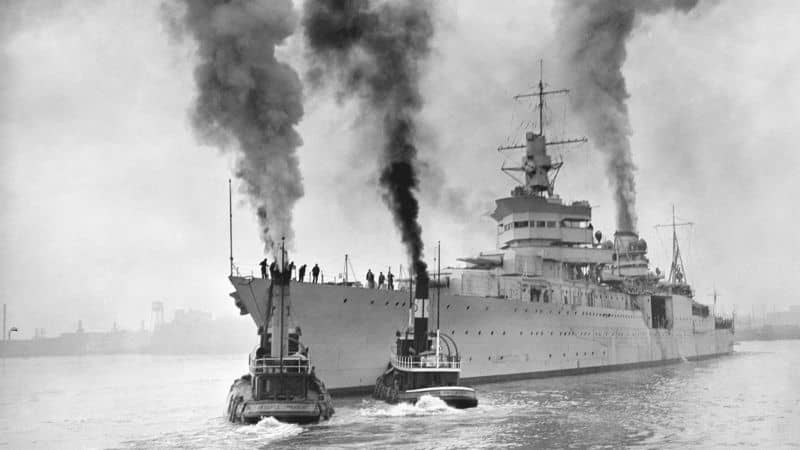ASHFORD, CT (WFSB) – An animal control officer reported that a child was bitten by a raccoon in Ashford. “It was wrapping its arms around my leg,” she explained. “It really hurt.”
CNN
—
If you’re a parent, heading out the door before a car ride with the kids probably goes a little like this:
Parent: “Did you go to the bathroom?”
Child: “No, I don’t have to go.”
Parent: “Go now, you may not get the chance later.”
At least for one New Hampshire woman, that was pretty much the ongoing conversation she had with her four kids … so much that she made it her vanity license plate for 15 years.
Wendy Auger is proud of her “PB4WEGO” plate and told CNN she’s never had any issues with it. Until now.
New Hampshire asked Auger, in a letter she received August 16, to surrender her plate because it includes a phrase relating to “sexual or excretory acts or functions,” said Auger.

I’m not a political activist,” she said. “But this is a non-offensive thing that I’ve had and it’s part of who we are as a family and who I am and there was zero reason for them to take it away.”
The recall letter said Auger had 10 days to surrender her plate with the option to choose another vanity plate at no extra cost or have one assigned to her.
If Auger chose to get a regular plate, a portion of her vanity plate fee would be refunded to her, according to the letter.
After hearing about Auger’s situation from a mutual friend, New Hampshire Gov. Chris Sununu got involved.
“Upon this being brought to my attention, I reached out to the Division of Motor Vehicles and strongly urged them to allow Wendy to keep the license plate she has had for the last 15 years,” Sununu told CNN in a statement.
“I recently left a message on her phone to share the good news that her plate will not be recalled.”
Auger said she was happy she got to keep a piece of who her family is with her.
“I wasn’t going to go down without a fight,” she said.
For New Hampshire residents, the cost of a vanity license plate includes the price of your town/city and state registration fees, plus $40 for the Vanity Plate fee, plus a one time $8 fee, according to the New Hampshire Division of Motor Vehicles.
CNN reached out to the New Hampshire DMV for comment but has not heard back.
Don't Miss
Editor’s Note: This story was originally published in April 2023. CNN — Slumped on his club, head buried in his
Editor’s Note: Monthly Ticket is a CNN Travel series that spotlights some of the most fascinating topics in the travel
Editor’s Note: Monthly Ticket is a CNN Travel series that spotlights some of the most fascinating topics in the travel
Editor’s Note: This story was originally published in April 2023.
CNN
—
Slumped on his club, head buried in his arm, Rory McIlroy looked on the verge of tears.
The then-21-year-old had just watched his ball sink into the waters of Rae’s Creek at Augusta National and with it, his dream of winning The Masters, a dream that had looked so tantalizingly close mere hours earlier.
As a four-time major winner and one of the most decorated names in the sport’s history, few players would turn down the chance to swap places with McIlroy heading into Augusta this week.
Yet on Sunday afternoon of April 10, 2011, not a golfer in the world would have wished to be in the Northern Irishman’s shoes.
A fresh-faced, mop-headed McIlroy had touched down in Georgia for the first major of the season with a reputation as the leading light of the next generation of stars.
An excellent 2010 had marked his best season since turning pro three years earlier, highlighted by a first PGA Tour win at the Quail Hollow Championship and a crucial contribution to Team Europe’s triumph at the Ryder Cup.
Yet despite a pair of impressive top-three finishes at the Open and PGA Championship respectively, a disappointing missed cut at The Masters – his first at a major – served as ominous foreshadowing.
McIlroy shot 74 and 77 to fall four strokes short of the cut line at seven-over par, a performance that concerned him enough to take a brief sabbatical from competition.

But one year on in 2011, any lingering Masters demons looked to have been exorcised as McIlroy flew round the Augusta fairways.
Having opened with a bogey-free seven-under 65 – the first time he had ever shot in the 60s at the major – McIlroy pulled ahead from Spanish first round co-leader Alvaro Quirós with a second round 69.
It sent him into the weekend holding a two-shot cushion over Australia’s Jason Day, with Tiger Woods a further stroke behind and back in the hunt for a 15th major after a surging second round 66.
And yet the 21-year-old leader looked perfectly at ease with having a target on his back. Even after a tentative start to the third round, McIlroy rallied with three birdies across the closing six holes to stretch his lead to four strokes heading into Sunday.

The youngster was out on his own ahead of a bunched chasing pack comprising Day, Ángel Cabrera, K.J. Choi and Charl Schwartzel. After 54 holes, McIlroy had shot just three bogeys.
“It’s a great position to be in … I’m finally feeling comfortable on this golf course,” McIlroy told reporters.
“I’m not getting ahead of myself, I know how leads can dwindle away very quickly. I have to go out there, not take anything for granted and go out and play as hard as I’ve played the last three days. If I can do that, hopefully things will go my way.
“We’ll see what happens tomorrow because four shots on this golf course isn’t that much.”

The truth can hurt, and McIlroy was about to prove his assessment of Augusta to be true in the most excruciating way imaginable.
His fourth bogey of the week arrived immediately. Having admitted to expecting some nerves at the first tee, McIlroy sparked a booming opening drive down the fairway, only to miss his putt from five feet.
Three consecutive pars steadied the ship, but Schwartzel had the wind in his sails. A blistering birdie, par, eagle start had seen him draw level at the summit after his third hole.
A subsequent bogey from the South African slowed his charge, as McIlroy clung onto a one-shot lead at the turn from Schwartzel, Cabrera, Choi, and a rampaging Woods, who shot five birdies and an eagle across the front nine to send Augusta into a frenzy.
Despite his dwindling advantage and the raucous Tiger-mania din ahead of him, McIlroy had responded well to another bogey at the 5th hole, draining a brilliant 20-foot putt at the 7th to restore his lead.
The fist pump that followed marked the high-water point of McIlroy’s round, as a sliding start accelerated into full-blown free-fall at the par-four 10th hole.
His tee shot went careening into a tree, ricocheting to settle between the white cabins that separate the main course from the adjacent par-three course. It offered viewers a glimpse at a part of Augusta rarely seen on broadcast, followed by pictures of McIlroy anxiously peering out from behind a tree to track his follow-up shot.

Though his initial escape was successful, yet another collision with a tree and a two-putt on the green saw a stunned McIlroy eventually tap in for a triple bogey. Having led the field one hole and seven shots earlier, he arrived at the 11th tee in seventh.
By the time his tee drive at the 13th plopped into the creek, all thoughts of who might be the recipient of the green jacket had long-since switched away from the anguished youngster. It had taken him seven putts to navigate the previous two greens, as a bogey and a double bogey dropped him to five-under – the score he had held after just 11 holes of the tournament.
Mercifully, the last five holes passed without major incident. A missed putt for birdie from five feet at the final hole summed up McIlroy’s day, though he was given a rousing reception as he left the green.
Mere minutes earlier, the same crowd had erupted as Schwartzel sunk his fourth consecutive birdie to seal his first major title. After starting the day four shots adrift of McIlroy, the South African finished 10 shots ahead of him, and two ahead of second-placed Australian duo Jason Day and Adam Scott.
McIlroy’s eight-over 80 marked the highest score of the round. Having headlined the leaderboard for most of the week, he finished tied-15th.

Tears would flow during a phone call with his parents the following morning, but at his press conference, McIlroy was upbeat.
“I’m very disappointed at the minute, and I’m sure I will be for the next few days, but I’ll get over it,” he said.
“I was leading this golf tournament with nine holes to go, and I just unraveled … It’s a Sunday at a major, what it can do.
“This is my first experience at it, and hopefully the next time I’m in this position I’ll be able to handle it a little better. I didn’t handle it particularly well today obviously, but it was a character-building day … I’ll come out stronger for it.”
Once again, McIlroy would be proven right.
Just eight weeks later in June, McIlroy rampaged to an eight-shot victory at the US Open. Records tumbled in his wake at Congressional, as he shot a tournament record 16-under 268 to become the youngest major winner since Tiger Woods at The Masters in 1997.

The historic victory kickstarted a golden era for McIlroy. After coasting to another eight-shot win at the PGA Championship in 2012, McIlroy became only the third golfer since 1934 to win three majors by the age of 25 with triumph at the 2014 Open Championship.
Before the year was out, he would add his fourth major title with another PGA Championship win.
And much of it was owed to that fateful afternoon at Augusta. In an interview with the BBC in 2015, McIlroy dubbed it “the most important day” of his career.
“If I had not had the whole unravelling, if I had just made a couple of bogeys coming down the stretch and lost by one, I would not have learned as much.
“Luckily, it did not take me long to get into a position like that again when I was leading a major and I was able to get over the line quite comfortably. It was a huge learning curve for me and I needed it, and thankfully I have been able to move on to bigger and better things.
“Looking back on what happened in 2011, it doesn’t seem as bad when you have four majors on your mantelpiece.”

McIlroy’s contentment came with a caveat: it would be “unthinkable” if he did not win The Masters in his career.
Yet as he prepares for his 15th appearance at Augusta National this week, a green jacket remains an elusive missing item from his wardrobe.
Despite seven top-10 finishes in his past 10 Masters outings, the trophy remains the only thing separating McIlroy from joining the ranks of golf immortals to have completed golf’s career grand slam of all four majors in the modern era: Gene Sarazen, Ben Hogan, Gary Player, Jack Nicklaus, and Tiger Woods.

A runner-up finish to Scottie Scheffler last year marked McIlroy’s best finish at Augusta, yet arguably 2011 remains the closest he has ever been to victory. A slow start in 2022 meant McIlroy had begun Sunday’s deciding round 10 shots adrift of the American, who teed off for his final hole with a five-shot lead despite McIlroy’s brilliant 64 finish.
At 33 years old, time is still on his side. Though 2022 extended his major drought to eight years, it featured arguably his best golf since that golden season in 2014.
And as McIlroy knows better than most, things can change quickly at Augusta National.
Don't Miss
CNN — If you’re a parent, heading out the door before a car ride with the kids probably goes a
Editor’s Note: Monthly Ticket is a CNN Travel series that spotlights some of the most fascinating topics in the travel
ASHFORD, CT (WFSB) – An animal control officer reported that a child was bitten by a raccoon in Ashford. “It
Editor’s Note: Monthly Ticket is a CNN Travel series that spotlights some of the most fascinating topics in the travel world. In October, we shift our focus to the offbeat, highlighting everything from (allegedly) haunted spaces to abandoned places.
CNN
—
In March 2022, the world let out a collective gasp when the remarkably preserved shipwreck of Ernest Shackleton’s HMS Endurance was discovered almost two miles beneath the icy Antarctic seas.
But scores more sunken vessels remain on the ocean floor, awaiting rediscovery.
Here are some of the world’s most infamously elusive shipwrecks, plus a few you can see for yourself (some without even getting wet).
A lowly cabin boy shouldered the blame for the sinking of Christopher Columbus’ Santa Maria flagship off the coast of Haiti on Christmas Eve 1492. The inexperienced sailor is said to have taken the wheel after Columbus went for a nap, and shortly after wrote off the ship by crashing it into a coral reef.
That’s one theory, anyway. However the Italian explorer’s ship met its fate, excitement bubbled over in May 2014, when archaeologist Barry Clifford claimed he’d chanced upon its long-lost wreck.
Maritime history buffs’ hearts sank after UNESCO poured cold water on the claim, saying the ship that’d been found was from a much later period.
The Santa Maria is still down there, somewhere.

This 16th-century merchant ship – or “carrack” – shuttled between India and its home in Portugal. But given its mammoth size – 118 feet-long and 111-feet-high – it was an unwieldy beast to captain.
Perhaps it was only a matter of time before the Flor de la Mar went down, which it did in a heavy storm off Sumatra, Indonesia in 1511.
Most of the crew perished, and its booty – said to include the entire personal fortune of a Portuguese governor, worth a cool $2.6 billion in today’s money – was lost.
Recently, a fictionalized version of the pirate Zheng Yi Sao went in search of the treasure on an episode of British sci-fi series “Doctor Who,” only to unleash the dreaded Sea Devils.
It may not have its own theme song sung by Celine Dion, but the SS Waratah is known as “Australia’s Titanic” – and for good reason.
A passenger cargo ship built to travel between Europe and Australia with a stopover in Africa, the Waratah disappeared shortly after steaming off from the city of Durban in present-day South Africa in 1909 – just three years before the Titanic tragedy. As for the cause, theories abound.
The entire liner, complete with eight staterooms, music lounge and all 211 passengers and crew, was never found. Ninety years after the Waratah went down, the National Underwater and Marine Agency thought they’d finally found it, but it was a false alarm.
Said the late thriller writer Clive Cussler, who spent much of his life searching for the wreck, “I guess she is going to continue to be elusive a while longer.”
Rotten Tomatoes’ “Tomatometer” might rack up a rancid 17% for the 2016 Nicolas Cage movie, “USS Indianapolis: Men of Courage,” but in real life, the ship played a game-ending role in World War II.
The Indianapolis was chosen to transport the uranium core of the “Little Boy” nuclear bomb to Tinian Island, where the weapon was assembled shortly before being used to devastating effect on Hiroshima.
The drop-off of the deadly cargo went without a hitch, but on its return journey, the Indianapolis was hit by a Japanese sub, with many crew members perishing from shark attacks and salt poisoning.
The exact whereabouts of the warship remained a mystery for decades, but was finally located by a team led by Microsoft co-founder Paul Allen, in 2017 – 18,000 feet below the surface of the Pacific.

Not just one shipwreck, but an entire ghastly genre of them.
It’s estimated some 1,000 ships now on the bottom of the ocean were complicit in the wicked “triangular trade” across the Atlantic that saw some 12-13 million Africans forced into slavery.
Many of these ships sank in turbulent weather, such as the São José, which went down off the coast of South Africa in 1794.
Others, like the Clotilda, were purposefully scuttled by their owners, to cover up evidence of slave trading, long after the 1807 Act Prohibiting Importation of Slaves.
The wrecks of both these vessels have now been located – the São José thanks to the work of Diving With a Purpose (DWP), a group of largely Black scuba divers who dive on the sites of sunken slave ships, and bring the likes of rusted manacles and iron ballasts to the surface.
It’s impossible to retrieve such objects without also dredging up stories of human suffering, although DWP’s goal is to document slavery’s nefarious legacy, using it to educate and enlighten.
Still, such ships are notoriously elusive, and many may never see the light of day again.
Mehmed Çakir was diving for sponges off the coast of Yalıkavak, Turkey in 1982, when he happened upon the remains of a trading ship that had sunk here some 3,000 years previous.
His was the first of many dives – over 22,400 in fact – to bring up the long-lost treasures of the Uluburun, and what a haul it was; 10 tons of copper ingots; 70,000 glass and faience beads; olive oil and pomegranates stored in Cypriot pottery jars.
Some of the horde can now be seen at the Bodrum Museum of Underwater Archaeology, and while not much of the Bronze Age wreck survives, there’s a cross section reconstruction, which gives a feel for how it would have been stacked with all those goods, all those centuries ago.

Eerily intact, the 17th century warship Vasa looks more like a prop from the “Pirates of the Caribbean” franchise, than a ship that first (and last) set sail in 1628.
The Swedish behemoth made it about 1,300 meters out of port before it went down, and was only pulled from its silty grave some 333 years later.
A crew of archaeologists (who took typhoid and tetanus jabs to protect themselves from various bacterias) discovered a hull bristling with 700 sculptures and decorations of mermaids, lions and Biblical figures – what has been described as essentially a “gigantic billboard for Sweden and Gustav II Adolf,” the country’s redoubtable king of the time.
Since a dedicated museum opened in Stockholm in 1990, the Vasa has become one of the world’s least elusive shipwrecks, ogled so far by some 25 million visitors.
Spied from the banks of the River Clyde at Greenock in Scotland, you might mistake the wreck of the MV Captayannis for a recently demised whale.
The black hull of this Greek sugar-carrying boat, rolled onto its side, is a favorite perch for feathered residents of a nearby bird sanctuary – and has been, since the ship went down in a squall in January 1974.
It’s said no one took responsibility for the so-called “sugar boat,” hence why it’s still wedged into a sandbank – a gauche reminder of the sea’s capriciousness.
Still, it’s a blessing for local boat charters like Wreckspeditions, who’ll take maritime rubberneckers up close, while pouring them a hot chocolate.
If scuba diving is what floats your boat, chances are you’ve heard of Chuuk Lagoon.
On this sprinkling of islands 1,000 miles northeast of Papua New Guinea, the Japanese set up their most formidable World War II naval base – that is, until Operation Hailstone was launched in 1944, with Allied forces sending some 60 Japanese ships and aircraft to a watery grave.
With most of them still down there, Chuuk Lagoon has become a mawkish subaquatic museum for divers to gawk at barnacled tanks from the San Francisco Maru or the long-abandoned compass and engine telegraphs of the Nippo Maru.
MS World Discoverer, Solomon Islands
“Open 24 hours” declares Google Maps optimistically about the shipwreck of the MS World Discoverer.
Since the cruise ship MS World Discoverer struck something hard, and half-sank off the shores of Roderick Bay in the Solomon Islands in 2000, it’s become a tourist attraction for passing ships (all passengers, it should be pointed out, were helped to safety).
Gently rusting away, at a 46-degree list, the ship looks like it turned on its side, and went to sleep. If nothing else, it’ll have you counting the lifeboats on your own vessel as you sail by.
Don't Miss
CNN — If you’re a parent, heading out the door before a car ride with the kids probably goes a
Editor’s Note: This story was originally published in April 2023. CNN — Slumped on his club, head buried in his
CNN — Lewis Hamilton may be Formula One’s most successful driver but after securing a record-equaling seventh world title on
ASHFORD, CT (WFSB) – An animal control officer reported that a child was bitten by a raccoon in Ashford.
“It was wrapping its arms around my leg,” she explained. “It really hurt.”
State police said they responded to the incident on Fitts Road to assist the officer.
Video of the incident was captured by a surveillance camera:
A girl was attacked by a raccoon in Ashford. The family gave Channel 3 video of the attack.
It happened around 7:55 a.m. on Friday.
“I was going out to get on the bus and a racoon was there and tried to attack me,” said 5-year-old Rylee MacNamara of Ashford. “It didn’t want to go off of my leg.”
Rylee MacNamara said she and her mother suffered some bite marks and scratches before her mother was able to yank the animal off her.
Panicking, Logan, Rylees mother, screams for help.
“It’s a rabid racoon, get some help!,” said Logan.
The raccoon ran off into the woods after she threw it off.
There’s no word yet on if the animal was rabid.
“I thought maybe she slammed her finger in the door. I definitely wasn’t expecting to see a racoon wrapped around her leg,” Logan said.
The two went to the hospital, received rabies shots, and were back home in a couple of hours.
“We just kind of panicked at first. I was more scared than anything,” said Logan.
Neighbor, Jessica Gessay, isn’t surprised this happened.
“These woods around here… I fear them. There’s things out here. Animals, wild animals things like that,” said Jessica.
“It’s disturbing that it would be that close to our houses,” added Dave Frank, Ashford.
Animal control spent Friday morning in the woods to try and track down the animal. However, it was nowhere to be found.
The Macnamara’s might take it into their own hands by setting traps around the house.
Rylee and Logan will head back to the hospital every couple of days for the next two weeks to get more shots.
They Macnamara’s also say their kids won’t be allowed outside alone in the near future.
An animal control officer reported that a child was bitten by a raccoon in Ashford.
An animal control officer reported that a child was bitten by a raccoon in Ashford.
Copyright 2022 WFSB. All rights reserved.
Don't Miss
CNN — If you’re a parent, heading out the door before a car ride with the kids probably goes a
Editor’s Note: This story was originally published in April 2023. CNN — Slumped on his club, head buried in his
Editor’s Note: Monthly Ticket is a CNN Travel series that spotlights some of the most fascinating topics in the travel
(LEX 18) — For two decades, the depths of Lake Cumberland have contained a mystery. Sitting somewhere at the bottom of the lake has been a helicopter that crashed in 2002, which lead to no deaths.
After years of searches by multiple parties, the helicopter was found and brought to shore this week.
MYSTERY SOLVED: A helicopter emerged from Lake Cumberland today after spending 20 years 100 feet underwater. Everyone got out safe when it crashed, but the wreckage site remained a mystery.
I’ll have how a determined group of locals solved that mystery tonight @ 11 on @LEX18News pic.twitter.com/yibQf1P7Rm
— Ricky Sayer (@RickyReports) September 14, 2022
“It was a crazy idea [I had] as a child, it became a feasible idea 5 years ago.”
Alex Ashley was 10 years old when the helicopter crashed during a Poker Run in 2002. He organized the effort to find and recover the helicopter, which was being used to film the event from above.
To find it, Helm turned to his now friend, Landon Helm, who watched the crash.
“I said they are all looking in the wrong spot,” Helm said he told Ashley, referring to other search teams. “This is where I saw it go down.”
Ashley purchased a boat already equipped with specialized sonar equipment. He spent 18 hours scanning the lakebed. After the equipment picked up something last week, he brought in the team of Jerry Stephens, Chris Money, and Matt McDaniel. They are firefighters in Nicholasville and they helped by scuba diving to find the helicopter.
“It was surreal definitely,” Money said “I had to touch it a couple of times to known it was real.”
One of them brought something special back up to shore for Alex.
“They brought the pilots headset up, it was amazing, it was cool” he said.
Slowly, using barrels filled with air to lift the helicopter, they started bringing it to shore Tuesday.
“It’s pretty cool you know I was one of the last people to see it go down and one of the first to see it come up,” Helm said.
By sundown, the helicopter was out of the water. Ashley said he may place it in one if his businesses.
Don't Miss
CNN — If you’re a parent, heading out the door before a car ride with the kids probably goes a
Editor’s Note: This story was originally published in April 2023. CNN — Slumped on his club, head buried in his
LAKE GEORGE — The Village Board is expected to announce a moratorium on any new commercial property water hookups in
The US is moving $3.5 billion to the new “Afghan Fund,” but officials said they won’t release the money imminently to an institution in Afghanistan because there is no trusted institution to guarantee the funds will benefit the Afghan people, the officials said.
Instead, it will be administered by an outside body, independent of the Taliban and the country’s central bank.
“The Fund may use assets to provide Afghan banking sector liquidity, keep Afghanistan current on its debt service obligations, support exchange rate stability, transfer funds, as appropriate to public Afghan financial institutions, or any other use for the benefit of the Afghan people that is approved by the Fund’s Board of Trustees,” said a State Department official.
Down the line, transferring these funds to the Afghan central bank could happen but it would depend on two key factors: responsible management of the bank and assurances that the funds will not be diverted to terrorists or criminals, the officials added.
“We do not have that confidence today,” said a senior US official. At minimum the Afghan central bank will need to “demonstrate its independence from political influence and interference.” It will also need to demonstrate it has “instituted adequate anti-money laundering and countering the financing of terrorism controls” and “complete a third party needs assessment and onboard a reputable third party monitoring,” the official explained.
The US has been clear in telling the central bank — known as the Da Afghanistan Bank (DAB) — what steps it would need to take and reiterated those steps in a letter this week from the United States deputy secretary of the Treasury, which CNN reviewed. The letter cites the need for the DAB to demonstrate independence from Taliban influence and interference, among other expectations.
Earlier this year President Joe Biden signed an executive order allowing for the $7 billion in frozen assets from Afghanistan’s central bank to eventually be distributed inside the country and to potentially fund litigation brought by families of victims of the September 11, 2001, terror attacks. The funds were frozen by the US government after the Afghan government collapsed last year and the Taliban took over control of the country.
Afghanistan — now under Taliban control for over a year — is facing a potential economic catastrophe. Lawmakers have pushed the Biden administration to release the funds in order to keep the country running, for necessities such as paying teacher salaries. Last month, the UN said that the humanitarian support being provided to the country is not enough to sustain its economy.
The timing of when the central bank could meet the expectations laid out is hard to estimate, US officials said this week. In recent months US officials have said that recapitalization of the Afghan central bank is not a “near-term option.”
Setting up the new fund will enable the funds to flow quickly, without having to go through the central bank to distribute funds.
“The people of Afghanistan face humanitarian and economic crises born of decades of conflict, severe drought, COVID-19, and endemic corruption,” said Wendy Sherman, US deputy secretary of state. “Today, the United States and its partners take an important, concrete step forward in ensuring that additional resources can be brought to bear to reduce suffering and improve economic stability for the people of Afghanistan while continuing to hold the Taliban accountable.”
The fund’s board will consist of a US and Swiss government official, as well as two Afghan economic experts. The Taliban is not part of this financing mechanism, the officials emphasized.
Still, the US remains in contact with the Taliban for “pragmatic engagement” in support of the Afghan people and to advance America’s interests, one of the senior US officials said.
By setting up this mechanism the US is making it clear that they intend to get the frozen funds to the Afghan people, though they do not intend to recognize the Taliban which is currently leading the country.
“I think relief organizations as well as countries that care about Afghans have sought to continue to work with almost 500,000 civil servants that continue to work on behalf of the people that includes teachers and includes health workers includes engineers, and it’ll include depth technocrats as well,” said the senior US official.
CORRECTION: This story has been updated to reflect the new fund will distribute frozen money independent of the Taliban and Afghanistan’s central bank.
Don't Miss
CNN — If you’re a parent, heading out the door before a car ride with the kids probably goes a
Editor’s Note: This story was originally published in April 2023. CNN — Slumped on his club, head buried in his
LAKE GEORGE — The Village Board is expected to announce a moratorium on any new commercial property water hookups in












